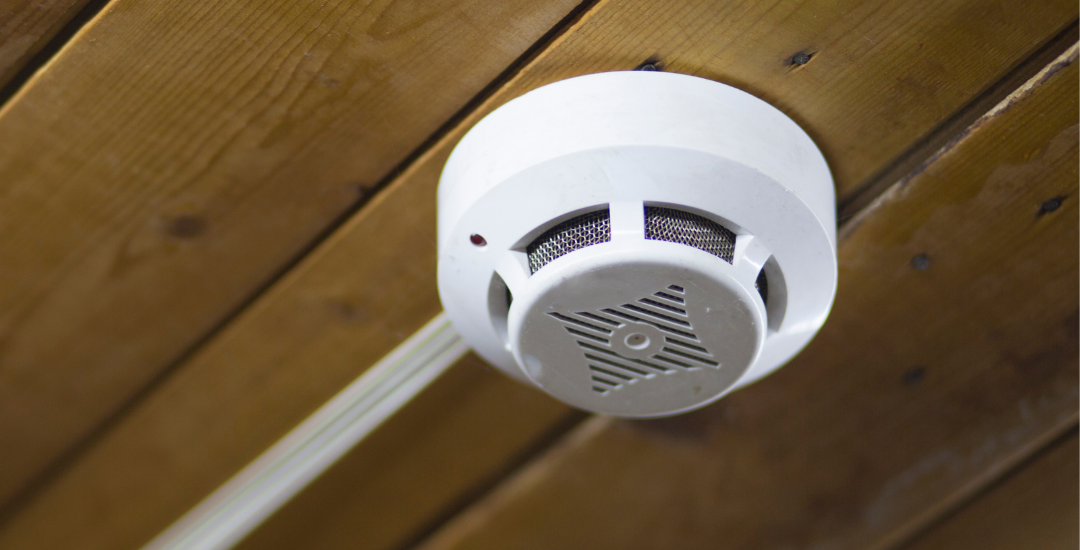Every 93 seconds, somewhere in the world, a building fire occurs. It is rare for every occupant to be able leave the facility unharmed. Every 3 hours and 10 minutes, one of those fires claims a life.
Immense responsibility falls on the shoulders of builders, property owners, and installers. They continue to equip facilities with connected sensors, providing a measure of confidence to building occupants. In this environment, consumers place their trust in enterprises, and enterprises trust the Internet of Things.
Below is an overview of how IoT management can help prevent fires and what IoT system might be suitable for this purpose.
IoT For Fire Protection
Construction companies apply innovations to campuses, governmental buildings, or smart houses, making them safer. As an example, modern facilities are benefitting from reliable utility control systems, including fire protection. Gone are the days when property owners could count only on smoke detectors and glowing exit signs.
The Internet of Things has changed the paradigm. It offers robust IoT ecosystems ensuring real-time facility management. Advanced building technology — bringing together motion sensors, temperature sensors, and other sensors under one roof to prevent disasters.
Some enterprises are still on the fence about IoT implementation, an admittedly costly and time-consuming process. It’s understandable to question whether that investment is worthwhile, and the processes in place to fully realize that ROI. But clients are entitled to safety. Moreover, in addition to safety, such an approach provides many more hidden benefits. They include:
Fewer resources
Maintenance of fire detection devices requires on-site employee presence. A company covers business travel expenses and sets a budget for decentralized monitoring to deliver on that. The IoT platform allows businesses to control sensor operation over the air – do you mean “remotely”? Consequently, it reduces time spent on routine tasks, increases staff productivity, and minimizes the risk of human errors. Meanwhile, enterprises can reduce operational costs efficiently.
Easer maintenance
In normal operating conditions, employees should be inspecting fire detectors weekly, updating as needed. But this process can make for arduous and time-consuming maintenance schedules. An IoT device management platform can simplify these processes through seamless sensor integrations.
Prompt response
What is the chance that all the sensors will operate accurately and help people in the case of an emergency? It’s hard to provide guarantees when companies don’t use connected devices for this purpose.
Meanwhile, IoT capabilities can ensure an instant response. The technology supports enterprises with accurate real-time data. It helps determine the cause of the fire instantly and organize a quick evacuation remotely.
Prevention of fraud.
One of the widespread methods of unauthorized entry is arson or simulated emergency. A fraudster can bring a lighter to the fire detector, and the devices will immediately enter emergency mode, opening all doors for evacuation. An IoT device management platform allows specialists to pinpoint the reason for an alarm signal in a matter of minutes and take the appropriate action.
Additional sources of income.
A construction company can turn convenience into profit with the IoT Real estate market players will often equip their facilities with connected devices and use IoT platforms for centralized management. By launching software-as-a-service (SaaS) from an IoT platform, enterprises can upgrade their business model and expand a target audience.
The Secret to Efficient IoT Device Management Platform Creation
Having an informed selection process always accompanies the desire to get an IoT platform.
You can prefer a ready-made product provided by one of your competitors. Companies also might create a custom solution. Businesses are encouraged to follow these ten simple steps to combine these options and design an IoT solution for fire protection with a low-code platform.
#1 Investigation. This includes a deep analysis of current processes and role distribution between involved employees.
#2 Selection of devices. This depends on the desired functionality. For IoT platform implementation, it goes beyond the elementary. Requirements often involve the creation of custom-made devices or firmware.
#3 Escape plan. The next step is drawing up an emergency plan. It is necessary to define the location of each sensor inside in the right way.
#4 Device preparation. It is necessary to conduct an in-depth analysis of device operation. The low code platform can integrate with different sensors to provide relevant information. Devices can be tied together via Wi-Fi or HotSpot. Then they can connect with the prescribed settings inside and get the configuration files. This way, you can send over air updates that do not require physical contact.
#5 IoT infrastructure plan. An IoT infrastructure plan addresses the design of a platform, the need for a web application, and integration points architecture.
#6 Building MVPs. Create a web application, an IoT platform, and an interface.
#7 Integration. This stage covers creation of integrations between IoT infrastructure components.
#8 Installing devices. The company does not need to control the consistency of the located devices to the prepared on-site map. After the revitalization process, devices transmit their location data to a central system. Specialists can verify the installation’s correctness remotely.
#9 Testing and fixing flaws. This process is essential to check the efficiency of the designed product and eliminate drawbacks if any.
#10 Production stage. Launching software for full-fledged use.
Afterword
It was once the case that IoT solutions for real estate properties were just about convenience and facility digitization. But it can’t be emphasized enough that technology also responds to the need for confidence in life safety systems. Having this level of assurance in a building provides the strongest investment rationale of all.
Keynote speaker, MBA, Chief Executive Officer and Founder, XME.digital, Victor Kmita has 15 years of experience in Digital Transformation for Telecommunications, Retail, and IoT. Six years ago, to help companies drive digitalisation faster, Kmita he launched XMe.digital, a low-code platform for enterprise service.


